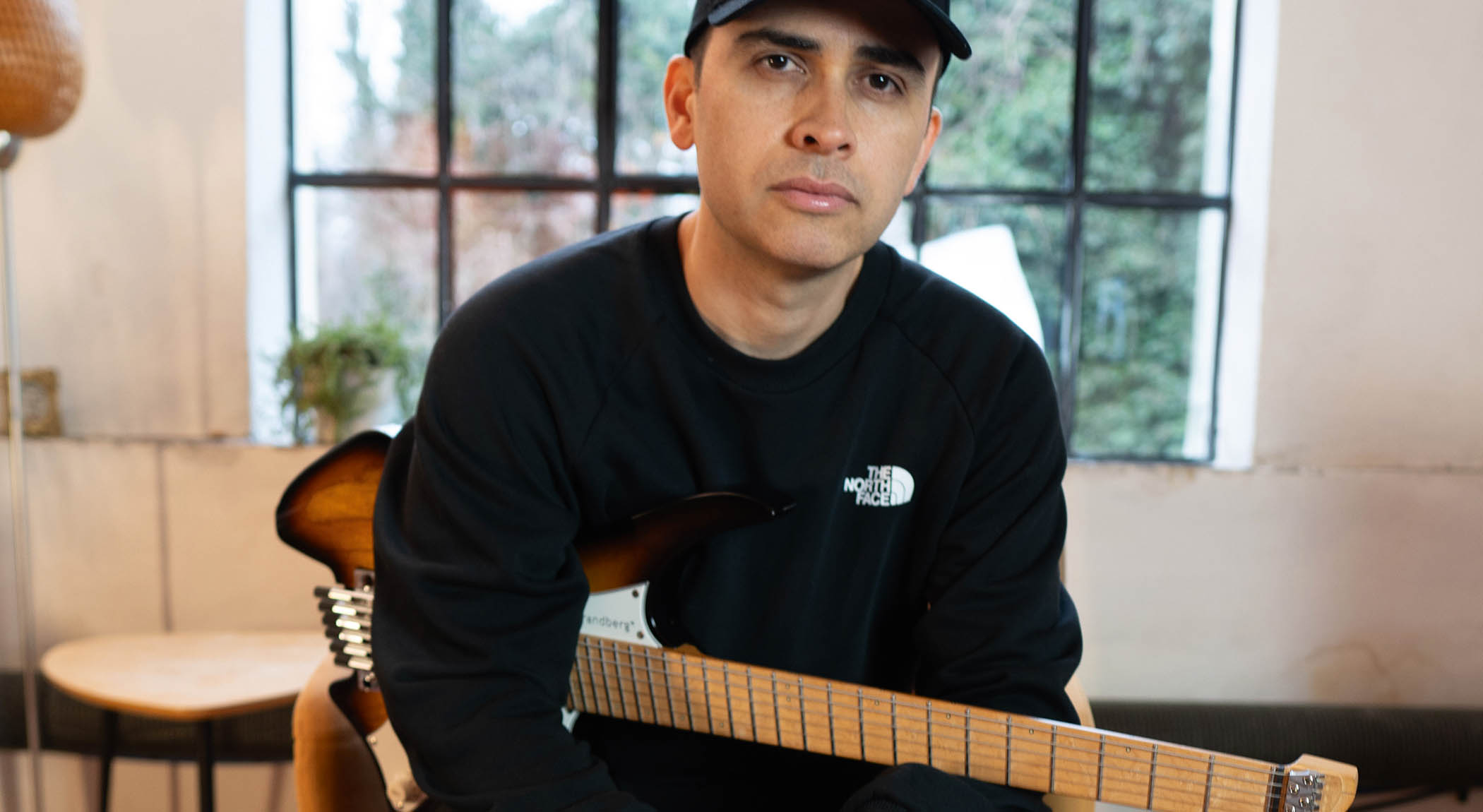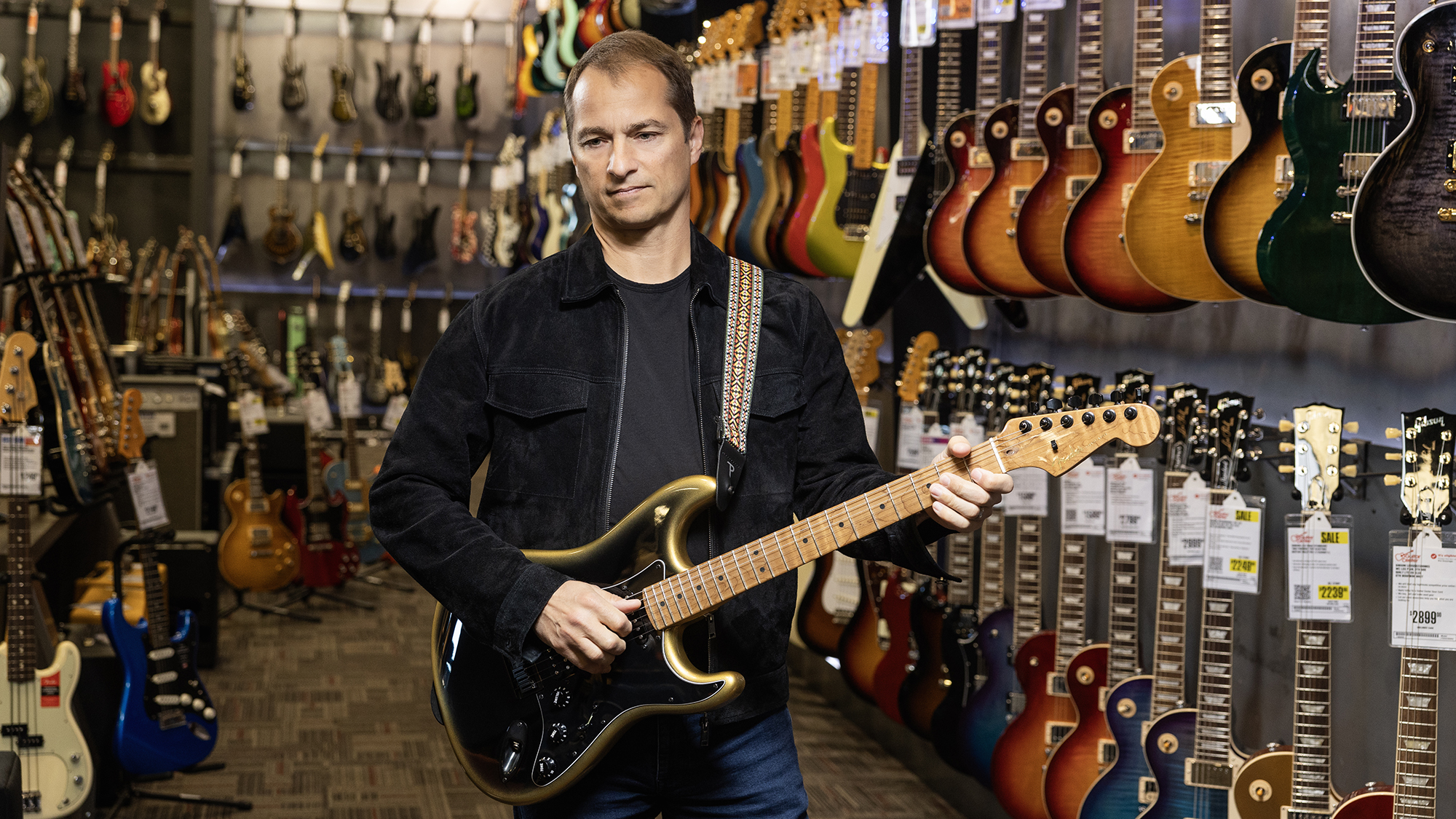His cascading melodies are like a pianist using the sustain pedal, while his double-stop lines channel an entire horn section – Rodrigo Gouveia is a neo-soul maestro, and this masterclass in his style will make you a more rounded player
Crossing the boundaries of jazz, soul and soul, this JTCguitar lesson presents practical strategies for expanding your sound with melodic embellishments and triads that fill the mix

Rodrigo’s style is a rich combination of jazz, fusion and soul sounds, always firmly based around strong melodies. Most importantly, he uses the guitar to create a huge range of less obviously ‘guitar-like’ textures.
His cascading chord/melodies are reminiscent of a pianist using the sustain pedal, since they beautifully blend into one another. However, on top of this he effortlessly plays quick lines with double-stops or even full triads, channelling an entire horn section!
Rodrigo has created several fantastic packages for JTCguitar, including Dorian Sounds, Soul Fusion Masterclass Volumes 1 to 3, plus as a box-set of the above, as well as 20 Neo-Soul Fusion Licks. So, a wealth of great stuff to start and continue your neo-soul fusion journey.
And with that in mind, here are three excerpts from his masterclass 10 Levels of Neo Soul. In this particular package, Rodrigo isolates several theoretical and conceptual elements that go to make up his signature sound and it’s incredibly inspiring music.
As this is essentially a ‘fusion’ style, we’re playing over quite a jazzy chord progression here, and you might notice that the chords are not all found in one key.
There are several possible interpretations, but Rodrigo likes to view the C7-Gm-Am section as being in D minor, with the A minor being the Minor V chord. And then the B minor chord is the relative minor of D major. This makes for an easy way to visualise the various changing notes at your disposal.
Example 1
Example 2
One of the easiest ways to add a touch of neo-soul to your own playing is by adding little melodic embellishments to chords. When a progression moves through two different keys like this one, start by adding notes from the arpeggios, using your ears to find the best scale tones to fill the gaps.
All the latest guitar news, interviews, lessons, reviews, deals and more, direct to your inbox!
Another classic neo-soul approach is the use of melodic double-stops. This allows for more of a ‘lead guitar’ sound, without completely sacrificing the harmonic richness. The most important thing is to work around notes from the underlying chord. This exercise demonstrates several ways of framing an F major arpeggio.
Example 3
Now we’ll return to the chord progression from Example 1, soloing over it with a mixture of double-stop and single-note lines. As mentioned in the main text, Rodrigo likes to view the majority of this progression as being in D minor, hence you’ll notice the shape of D minor pentatonic (D-F-G-A-C) in these lines.
